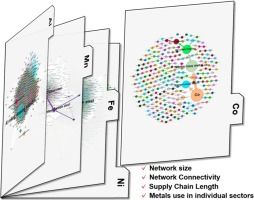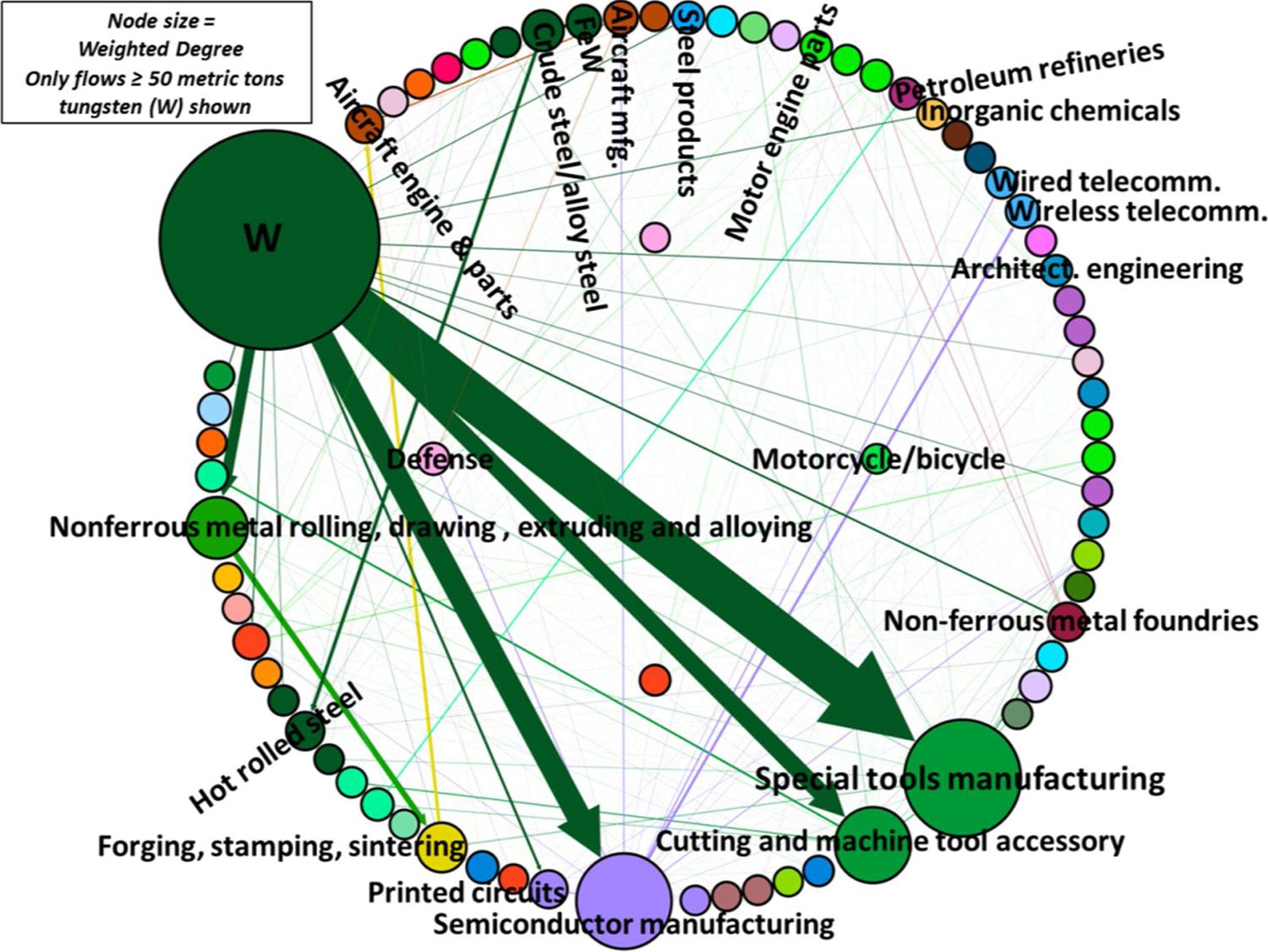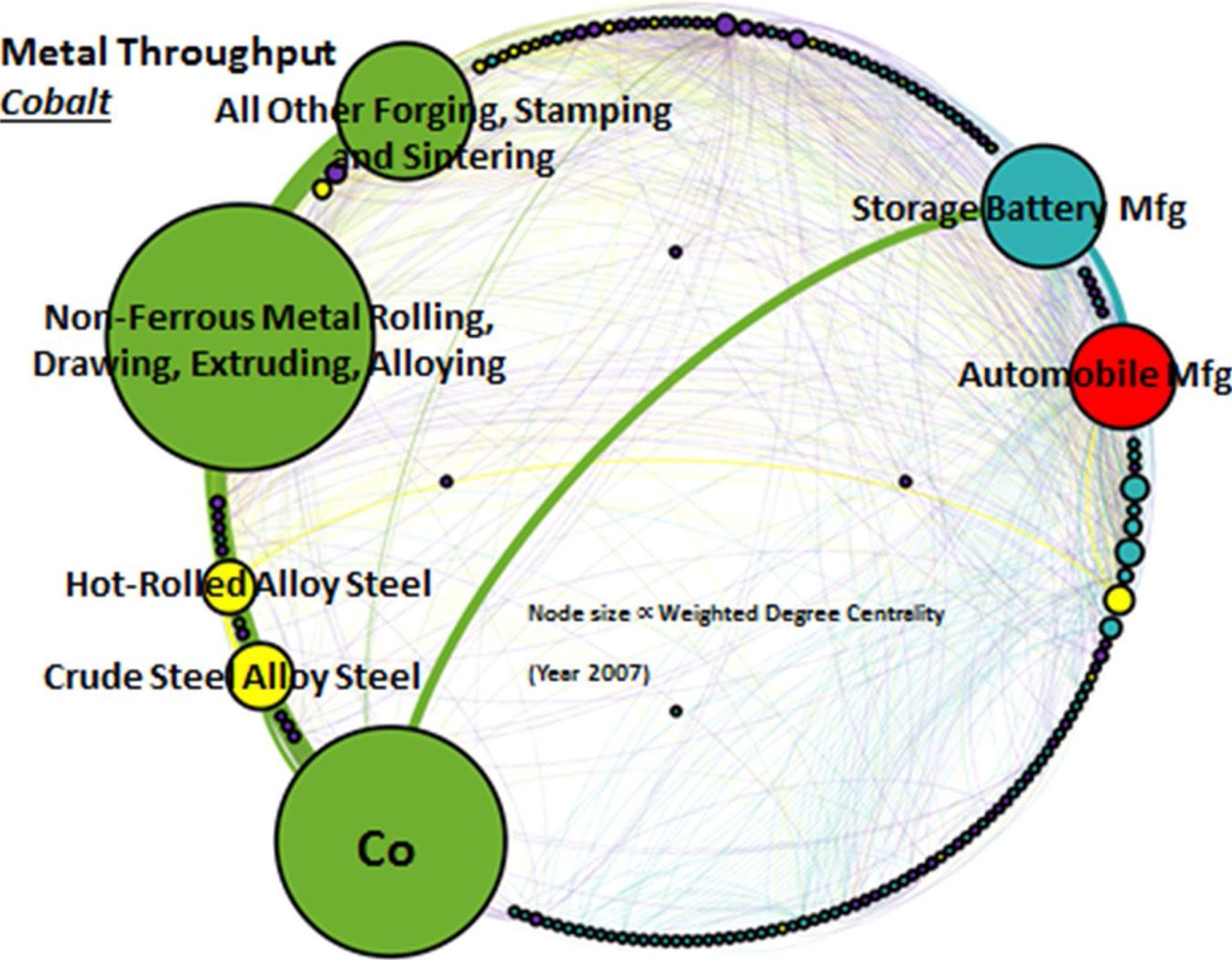Nuss, Philip*; Ohno, Hajime; Chen, Wei-Qiang; Graedel, T.E.
Resources, Conservation and Recycling 2019 145, 448-456. DOI: 10.1016/j.resconrec.2019.02.025
Abstract
Building a circular economy requires knowledge of physical material flows and stocks. One approach for obtaining data on the intersectoral exchanges of materials in an economy is with physical input-output tables (PIOTs). Using PIOTs of eleven alloying metals (aluminum, vanadium, chromium, manganese, iron, cobalt, nickel, copper, niobium, molybdenum, tungsten) for the entire United States economy in 2007, we apply network-based metrics and visualizations to identify key sectors and compare different PIOTs with each other. Some 40–45% of all intersectoral trade contains the major metals aluminum, copper, and iron, while this number ranges between only 11–15% for minor metals (e.g., cobalt, vanadium, niobium, molybdenum, tungsten). The majority of sectors rely on products containing the major metals, reflecting widespread use of those products in our modern economy. Network size provides an indication of supply chain steps required to move from metal production to finished product manufacturing. Supply chains for the minor metals require an average of 5–8 steps, while those of major metals involve 3 steps on average. Cobalt is used extensively to illustrate these results because its status as a “technology-critical material” demonstrates how these analytical approaches can reveal sector usage and dependency for a metal of potential supply concern. We conclude by presenting automobile supply chain networks and discuss the position of the automobile production sector in the US economy. The analytical and visualization approaches presented result in an improved understanding of metal flows and can help to better communicate underlying data, e.g., in a policy context.
Graphic Abstract.

Tungsten (W) network of the U.S. economy in 2007.

Visualization of the cobalt supply chain associated with the automobile manufacturing.
